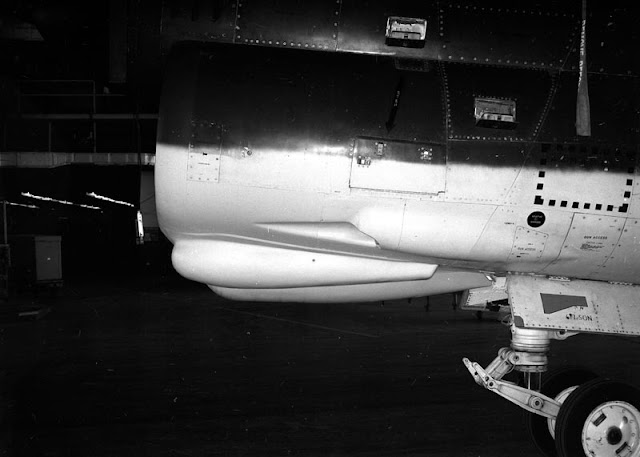 |
| VSD-10173U-A-7D-67-14582-Front-View-Mockup-FLIR-LST-19730716 |
This series of images shows one of the configurations tested on YA-7D 67-14582 during the summer of 1973 for incorporating the FLIR (Forward Looking Infrared) and LST (Laser Spot Tracker) onto the existing Corsair II air-frame.
 |
| VSD-10177U-A-7D-67-14582-Right-Side-View-Mockup-FLIR-LST-19730716 |
It appears that the chin mounted configuration was associated with the Hughes FLIR system that was canceled which led to the development of the Texas Instruments pod mounted FLIR system. The LST known as Pave Penny was later incorporated onto the bottom of the engine air inlet of Air Force A-7D/K aircraft.
 |
| VSD-10176U-A-7D-67-14582-Left-Front-View-Mockup-FLIR-LST-19730716 |
This particular configuration was labeled 4J and the pictures taken prior to flight number 330. Yet to be discovered are the engineering reports that would capture the data and testing results for this and obviously other similar configurations tested on 67-14582. It is also interesting to note that 582 had accumulated 332 flights since its maiden voyage on April 5, 1968
 |
| VSD-10175U-A-7D-67-14582-Left-Side-View-Mockup-FLIR-LST-19730716 |
All photos from the Vought Aircraft Historical Archives.


















































